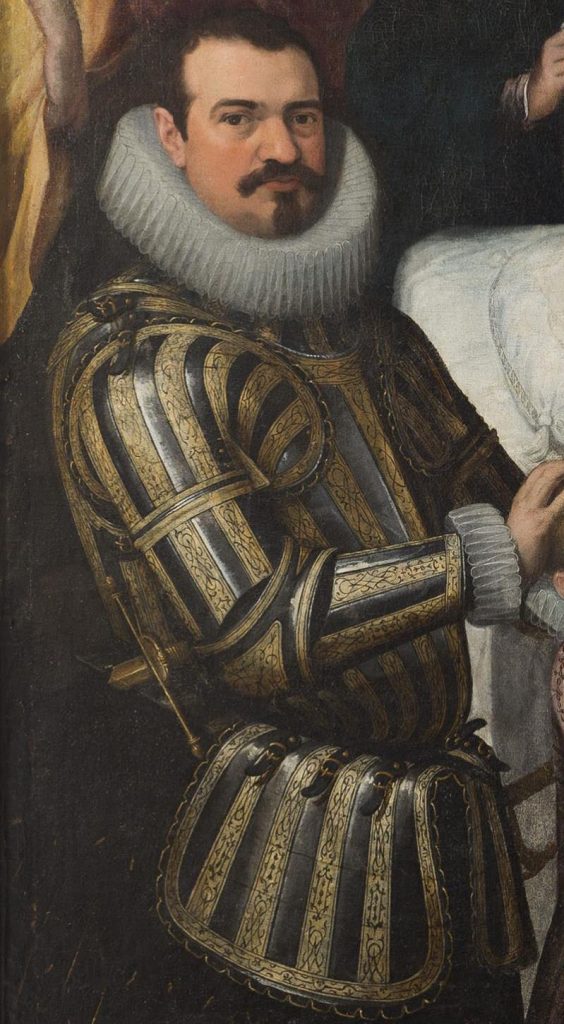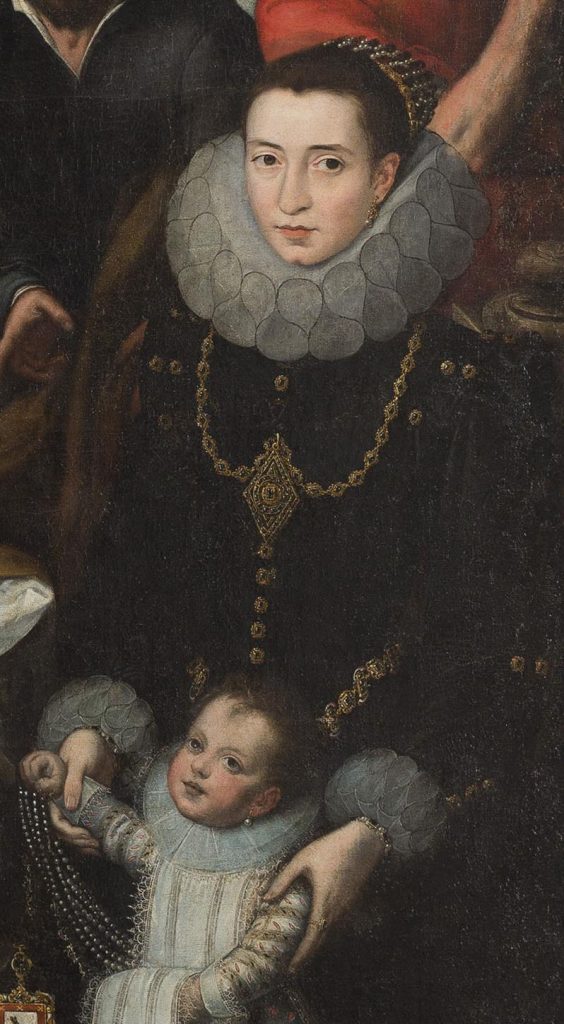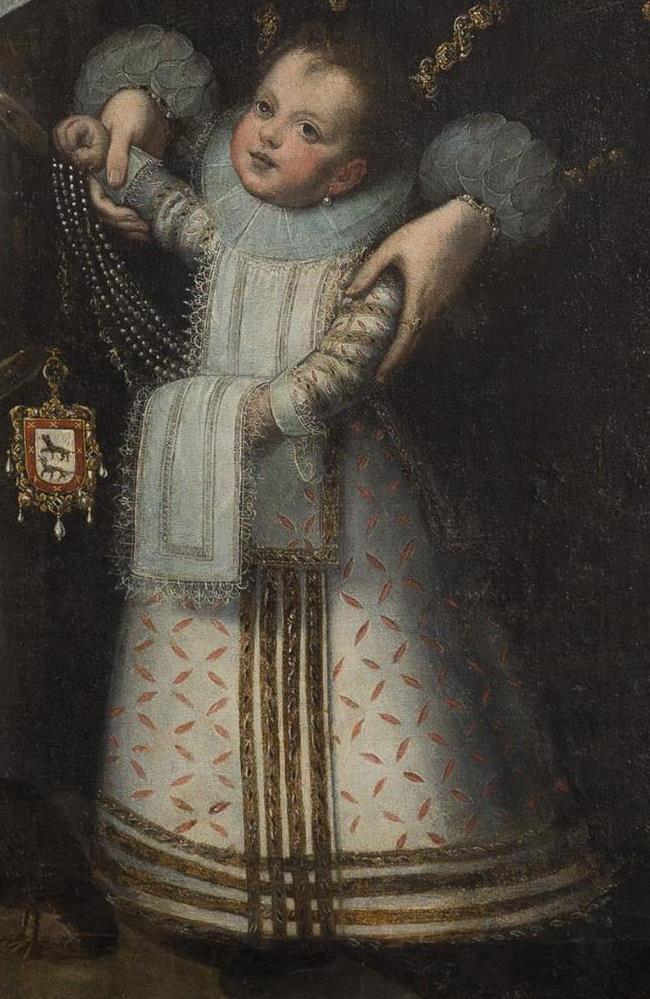Joan Yeguas
As part of the visit to the Renaissance and Baroque Art collection there is an area called “Portraiture: Painted Biographies”, with a small section devoted to “The image of the donor”, a good place to observe how the assertion of individuality is captured in portraits and how in certain cases a person’s social prestige is also demonstrated to the rest of the society in which they live. A paradigmatic case is the painting Adoration of Christ With the Ayala Family.
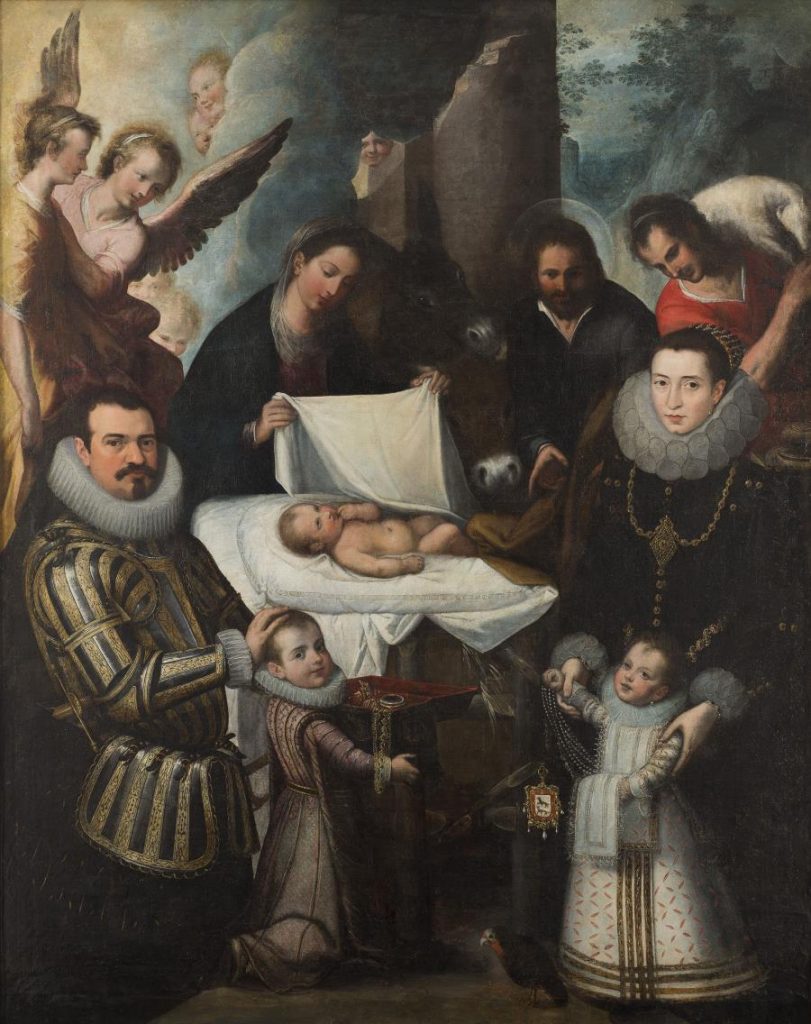
Straight away, we come to a portrait en famille of these four people, identified as the Ayala family, due to a heraldic device that can be seen on one of the jewels, depicting two wolves. It is a couple and their two children in 1602, when King Philip III granted them the county of Ayala. They are Antonio Francisco de Fonseca y Toledo, 1st Count of Ayala and Lord of Coca, and his wife Mariana Tavera de Ulloa. Their two eldest children were Antonio de Fonseca and María de Fonseca, and in the painting they must have been five and two, respectively. The work is attributed to the Flemish painter Juan de Roelas, done when the royal court had only recently made Valladolid the capital of the empire (1601-1606) thanks to the intrigues of the Duke of Lerma.
But there is more to the portrait of this family. Its members appear in a religious scene, making it obvious that they had paid for the painting. The work must almost certainly have been in a private chapel of the Count and Countess of Ayala, perhaps in Valladolid, as this Castilian city was where they usually resided. In any case, their presence in the foreground partly eclipses the holy story that is going on behind them, as shown by the luxuriousness of their clothes and jewellery. The contrast between the pomp of the Ayala family and the humility of the Nativity of the Son of God makes this exhibition of worldly vanity even more striking.
Clothes as a reflection of social status
Clothes make the man. The fact that an aristocrat should be portrayed wearing armour reflects the projection of his power. This nobleman wishes to transmit a message: that he can afford expensive equipment for warfare. Moreover, armour was a sign of identity of his class and of the values that had to govern his life, associated with feudal knightly mentality. From the look of it (black and gold stripes), and the type of geometric border that decorated the gold stripes, the Count of Ayala’s suit of armour recalls those made by the armourer Pompeo della Cesa, who worked for the young King Philip III (see the portrait painted by Juan Pantoja de la Cruz in 1605 and kept in the monastery of San Lorenzo de El Escorial); one must remember that the collection of the Royal Armoury was taken as a model for different kinds of aristocratic portrait. Besides the armour, we can also see the gilded hilt of his sword. As for his clothes, although he is kneeling, we can see the customary trunk hose, in fashion at the Spanish court between 1550 and 1625, approximately. And it is worth commenting on the type of beard, featuring a moustache (the ends of which were not yet upturned) and goatee (becoming popular from the 1590s onwards).
His wife is wearing a loose-fitting rigid gown, of the kind worn for ceremonies and social events. It consisted of a one-piece gown that hid the curves of the female body, the lower part of which was constructed over a farthingale, with wooden hoops to add volume. Notice the ruffs at the neck and the cuffs, similar to those her husband is wearing. On the rest of the surface of the gown we also see various jewels: there is a diamond-shaped brooch with a matching necklace made of precious stones and a chain that she wears around her waist, and many buttons. As well as these, the lady is wearing more jewellery: bracelets, rings, earrings, and a hairband made of pearls.
The boy and the girl are also dressed in their finest clothes. The heir is wearing a dress, according to the Spanish custom (from the late sixteenth until well into the seventeenth century) of dressing boys like girls until the age of five. The girl is wearing a rigid gown like her mother’s; she has pearl earrings, and is holding a brooch with the arms of the Ayala family, with a string of pearls. The boy is offering the Infant Jesus an open casket lined with red velvet, overflowing with jewellery.
A scene of wealth and social splendour
As a finishing touch to the scene of splendour, at the children’s feet we can see an exotic bird, of the parrot family (psittacidae). It is a species called the Cuban amazon (Amazona leucocephala), very common on some Caribbean islands. Its plumage is greenish in colour, apart from the red area on its throat, but in the painting the green colour has darkened, most likely due to the oxidization of the pigments.
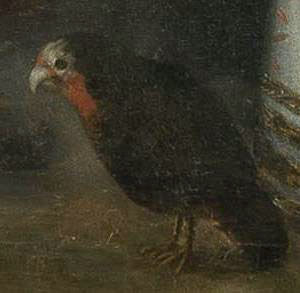
Parrot of the Ayala family 
Cuban amazon. Wikimedia Commons
The possession of exotic animals has always been seen as a sign of wealth and social power, from ancient Rome to the present day, but it is especially interesting in the early context of trade with the Americas. Along with other animals – I’m thinking of the crocodiles that decorated churches – agricultural produce such as maize, tomatoes, potatoes and cocoa also arrived, as well as indigenous pottery, some of which was eaten for its alleged hallucinogenic and abortive properties (see geophagia).
Related links
New display of Renaissance and Baroque
Curiosities of the collection: Renaissance and Baroque
Four stories from the Renaissance and the Baroque
Art del Renaixement i Barroc

